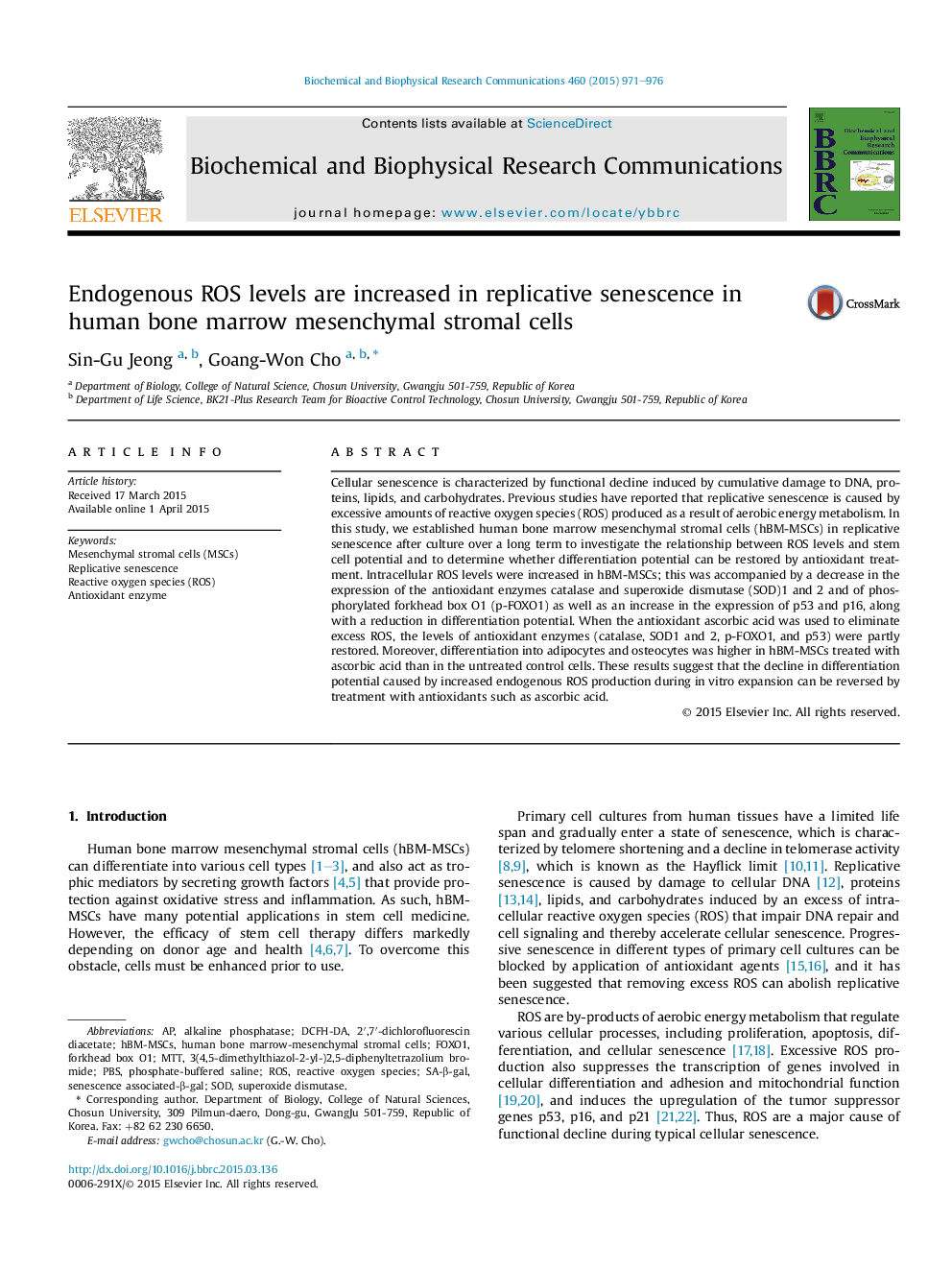| Article ID | Journal | Published Year | Pages | File Type |
|---|---|---|---|---|
| 1928176 | Biochemical and Biophysical Research Communications | 2015 | 6 Pages |
•Accumulation of ROS in long term cultured MSCs.•Alteration of antioxidant enzymes in replicative senescence MSCs.•Restoration of senescence MSCs by antioxidant reagent.•Recovered differentiation potency by antioxidant reagent.
Cellular senescence is characterized by functional decline induced by cumulative damage to DNA, proteins, lipids, and carbohydrates. Previous studies have reported that replicative senescence is caused by excessive amounts of reactive oxygen species (ROS) produced as a result of aerobic energy metabolism. In this study, we established human bone marrow mesenchymal stromal cells (hBM-MSCs) in replicative senescence after culture over a long term to investigate the relationship between ROS levels and stem cell potential and to determine whether differentiation potential can be restored by antioxidant treatment. Intracellular ROS levels were increased in hBM-MSCs; this was accompanied by a decrease in the expression of the antioxidant enzymes catalase and superoxide dismutase (SOD)1 and 2 and of phosphorylated forkhead box O1 (p-FOXO1) as well as an increase in the expression of p53 and p16, along with a reduction in differentiation potential. When the antioxidant ascorbic acid was used to eliminate excess ROS, the levels of antioxidant enzymes (catalase, SOD1 and 2, p-FOXO1, and p53) were partly restored. Moreover, differentiation into adipocytes and osteocytes was higher in hBM-MSCs treated with ascorbic acid than in the untreated control cells. These results suggest that the decline in differentiation potential caused by increased endogenous ROS production during in vitro expansion can be reversed by treatment with antioxidants such as ascorbic acid.
